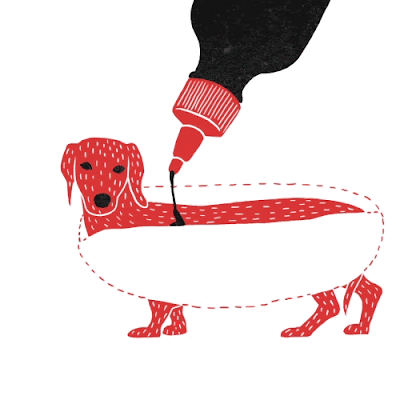New From NPR!腦部掃描測知痛感,科技進步到無法假裝啦!
下載聲音檔請點我
下載填空卷請點我
下載解析版請點我
DAVID GREENE, HOST:
All right. Let's hear now about some new research.
Scientists believe they have found a way to measure how much pain someone is
experiencing. They do it by scanning掃描 a patient's brain.
Researchers hope this technique could help doctors treat pain better, but as
NPR's Rob Stein reports, the advance進步/創舉 is also
raising concerns about whether this could interfere with干預doctors doing it the old fashioned way傳統的方式 - just listening to their patients.
ROB STEIN, BYLINE: Right now, when someone is in
pain, their doctor has no way to know how bad it is except to ask them questions. Like,
how ranks on a scale of one to 10.透過一至十分的衡量表來測知 And Tor Wager of the
University of Colorado says, that's often not good enough.
TOR WAGER: We all have trouble communicating our pain
and other feelings under different circumstances.在不同的狀況之下
STEIN: Many people just have a hard time很難 finding the right words. Some exaggerate誇大 how bad it is. Others are too stoic矜持/嚴肅- they downplay their pain對自身的疼痛輕描淡寫. And some are simply physically incapable沒有能力 of explaining what they're feeling
at all.
WAGER: Children and adults who can't fully report
pain accurately are particularly vulnerable脆弱/容易受傷害.
STEIN: That includes people who, say, suffered a stroke中風 or are very sick. So,
Wager and his colleagues decided to see if they could measure pain objectively客觀的 using brain scans腦部掃描. In a series of experiments involving 114
adults, the researchers measured brain activity as they administered pain施予疼痛 with a special device.
WAGER: It's a
computer-controlled hot plate以電腦控制的熱薄版 that goes on a person's arm or another part of the
body. And it can produce a safe, very
reliable source of painful input to the brain.
STEIN: The first question was whether brain scans
could tell how much pain the hot plate was
causing. In a paper being published in The New England Journal of Medicine,
Wager and his colleagues report what they found.
WAGER: We can measure, fairly accurately, how much
pain a person is experiencing. It is between 90
and 100 percent accurate.
STEIN: But the researchers wanted to find out if the
scans could do something even harder: Tell the difference between physical and emotional情緒的/情感的 pain.
WAGER: When people experience social pain社交痛苦 - especially pain that's elicited引起 by a recent break up最近才跟伴侶分手 and people feel rejected
in love 在感情的世界裡被所愛的人拒絕- that produces a brain pattern 腦部模式that looks remarkably similar非常明顯的類似 to the pattern elicited by physical pain.
STEIN: So for the next part of their experiment, the
researchers studied only people who had recently been dumped被情人甩.
WAGER: And they were - still felt rejected. And they weren't over the break-up.還沒有從上一段分手的感情中走出來
STEIN: The researchers showed the subjects pictures
of the people who had broken their hearts
and of people who were just friends, and
compared what was going on in their brains when they used the
computer-controlled hot plates on their arms.
WAGER: We tested our physical pain signature特徵, our pattern, to see whether it was
fooled into believing that the romantic rejection被甩 or social pain社交痛苦 was like physical pain. And we found
that it wasn't.
STEIN: And the researchers went even further, showing
that the scans could tell when a powerful prescription painkiller醫生處方的止痛藥 was working.
WAGER: The hope is if we could peer into凝視 people's brain, we can understand
that different kinds of pain are created by very different brain systems. And
we could tailor our treatments to 量身訂做those systems.
STEIN: Other scientists praised the research. Lynn
Webster is the president of the American
Academy
LYNN WEBSTER: It's fascinating. For a long time we've
tried to find objective ways to measure
pain and it's been elusive難以理解或是測得的.
STEIN: But Webster says brain scans for pain could be
misused. Insurance companies保險公司 might try to use them
to deny paying for pain drugs拒絕止痛型藥物的理賠. Some doctors might use them to question whether their patients are telling the truth, or instead of simply listening to their patients.
WEBSTER: If a patient believes their doctor
understands and cares about them and believes in their pain that can have as
much of a 30 percent reduction in their
pain. So this connection, this belief, can be enormously powerful.
STEIN: Tor Wager agrees that the scans should be used
very carefully.
WAGER: The bad scenario糟糕的狀況 would be, you come in
pain, the physician scans your brain and says, Well, we don't see the pain here
so we think it's in your mind. We don't
think it's really pain. I don't think that this kind of method can or should
ever be used as a pain lie detector.疼痛測謊機
STEIN: Instead, Wager hopes the technology will open
a helpful new window. Not only into how
pain really works in the brain, but also other
feelings as well.
Rob Stein, NPR News.











留言
張貼留言